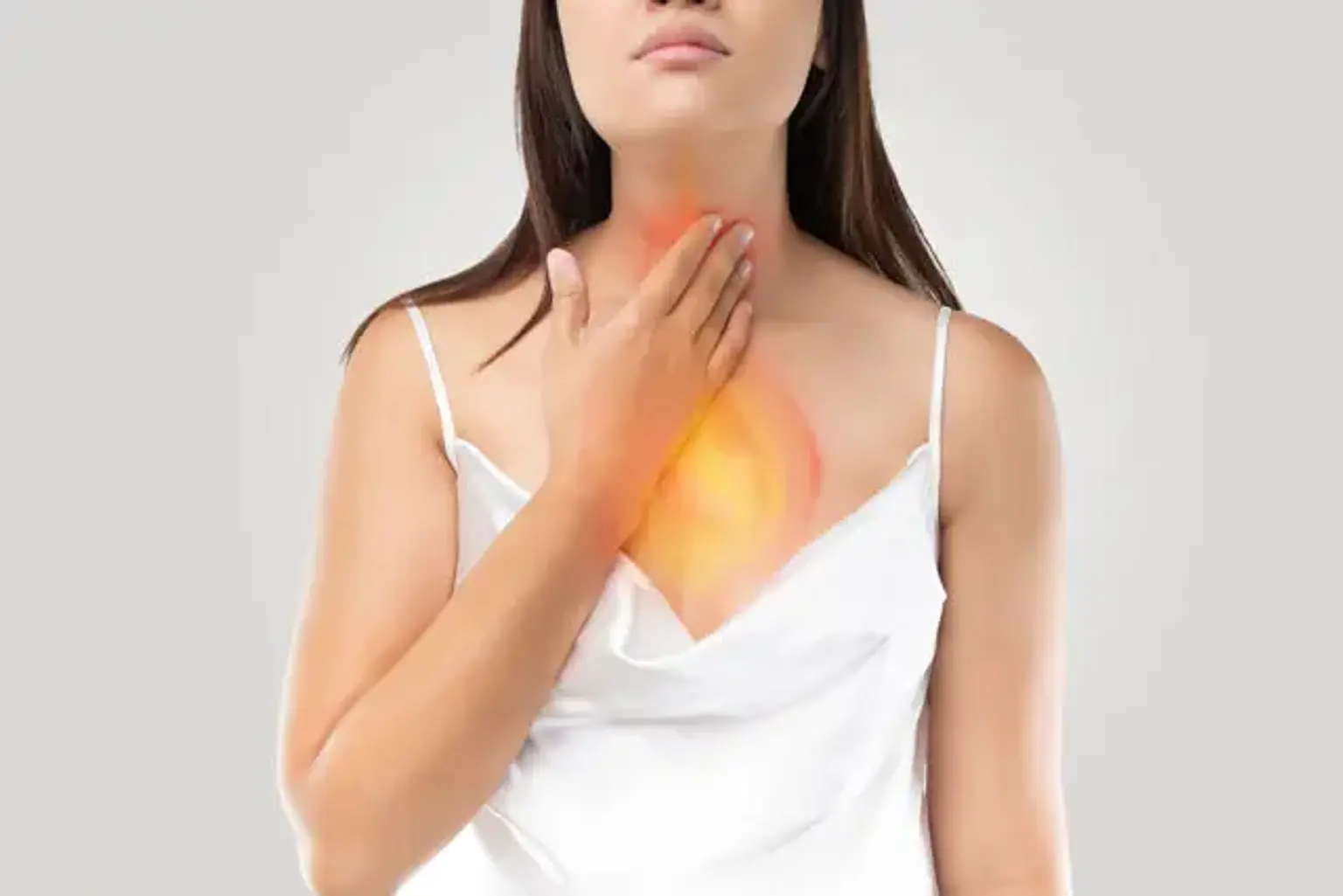Heartburn
Overview
Heartburn, also known as pyrosis, cardialgia, or acid indigestion, is a burning feeling in the upper central chest or belly. Heartburn is often caused by the regurgitation of stomach acid into the esophagus (gastric reflux). It is the most classic symptom of gastroesophageal reflux disease (GERD).
Gastroesophageal reflux disease (GERD) is a highly prevalent digestive condition that affects 18.1–27.8 % of people in North America. Approximately half of all individuals will experience reflux symptoms at some point in their lives. GERD is a disorder characterized by troubling symptoms and consequences caused by the reflux of stomach contents into the esophagus.
Belching, nausea, squeezing, stabbing, or a feeling of pressure on the chest are all typical characteristics for heartburn, in addition to burning. The discomfort frequently begins in the chest (just beneath the breastbone) and may extend to the neck, throat, or arm angle. Because the chest contains other vital organs than the esophagus (such as the heart and lungs), it is crucial to note that not all heartburn symptoms are esophageal in nature.
